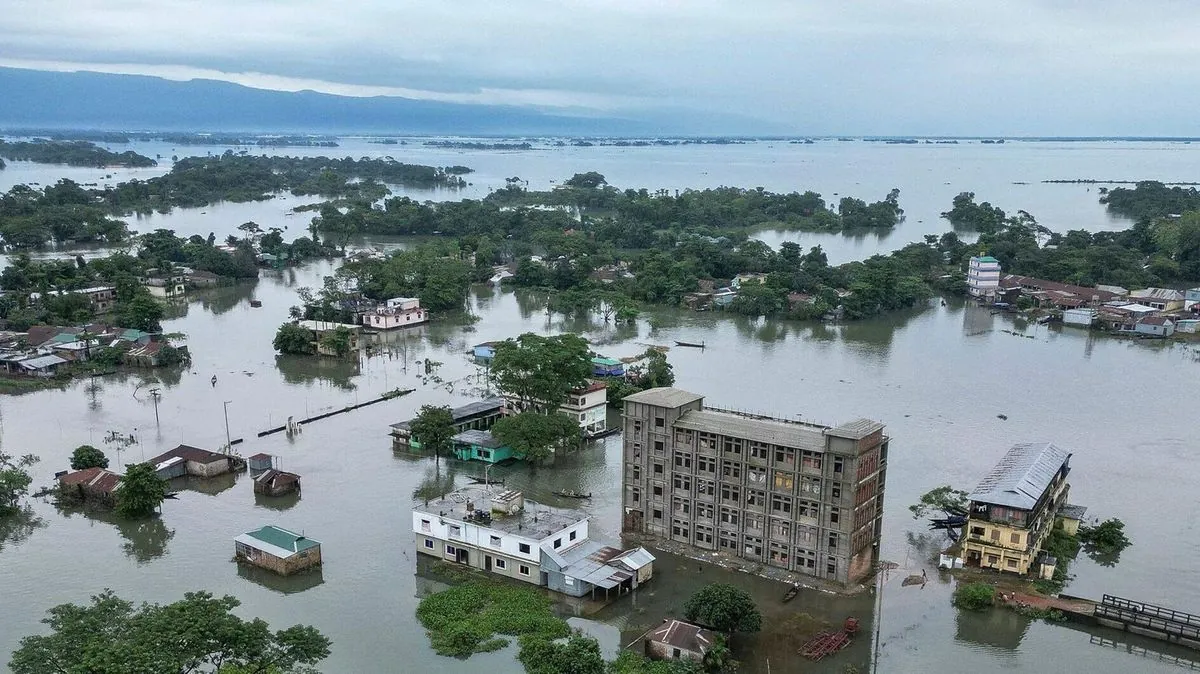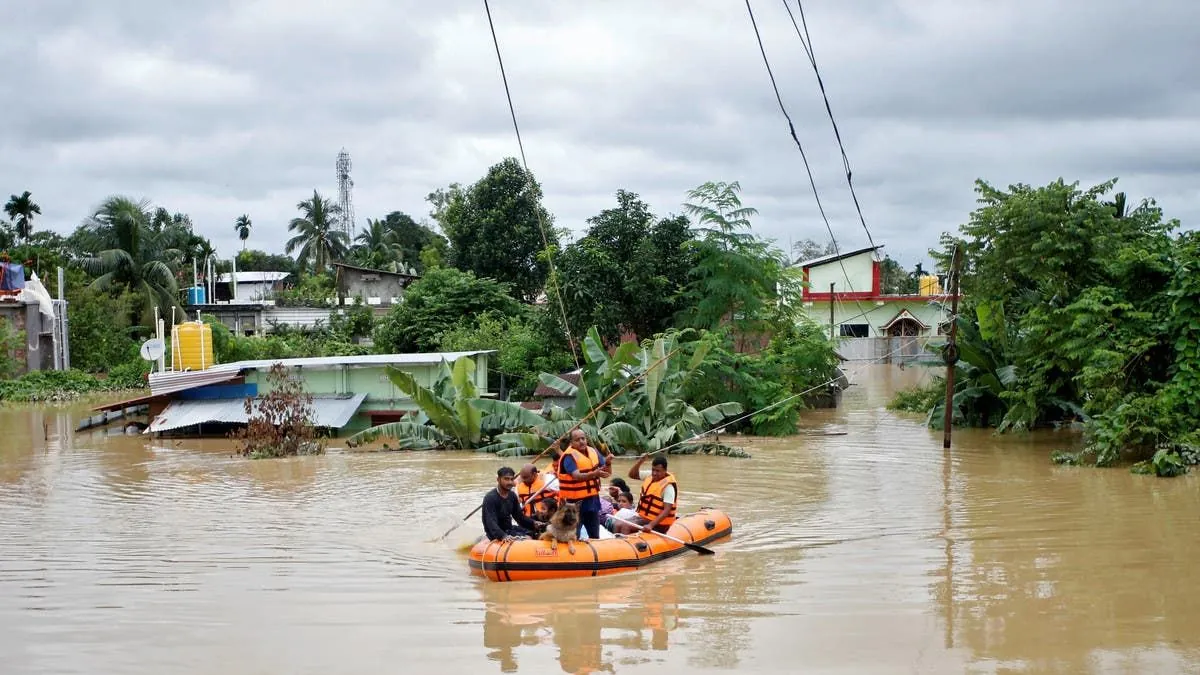Severe Flooding in Tripura and Bangladesh Displaces Thousands
Heavy rainfall in Tripura, India, and neighboring Bangladesh has led to widespread flooding, displacing over 65,000 people and causing multiple fatalities. Rescue operations are underway as millions face the impact of rising waters.

Intense precipitation in India's northeastern state of Tripura and adjacent Bangladesh has resulted in extensive flooding and landslides, causing significant displacement and loss of life. The disaster has affected millions across the region, prompting large-scale rescue and relief efforts.
In Tripura, over 65,000 individuals have been forced to evacuate their homes, with 23 fatalities reported. The flooding has impacted approximately 1.7 million people in the state. Indian Army personnel have been deployed to assist in rescue operations, utilizing lifeboats to transport people to safety. The military has successfully rescued 334 individuals stranded by the rising floodwaters.
The Gomti River, Tripura's primary waterway, continues to flow above the danger mark, posing an ongoing threat to surrounding areas. This river, which originates in the Tripura Hills and traverses through Bangladesh before emptying into the Bay of Bengal, has been a focal point of concern during this crisis.

In Bangladesh, the situation is equally dire. The death toll has risen to 13, with more than 3 million people stranded due to the floods. The Gomti River breached an embankment, inundating at least 15 villages and displacing hundreds of families. Coastal areas, including the Khulna district, have experienced flooding due to high tides causing river embankments to collapse.
"I have never seen such a flood in my lifetime."
The disaster has had far-reaching consequences, affecting infrastructure, crops, and livestock in both countries. In Tripura, 450 relief camps have been established to accommodate the displaced population. Meanwhile, in Bangladesh, over 75,000 people have been relocated to more than 1,500 shelters in flood-affected districts.
Rescue and relief efforts in Bangladesh are being supported by military and border guard personnel. However, blocked roads in several districts have hampered these operations, isolating affected communities and complicating the delivery of aid.
The flooding has sparked cross-border concerns, with some residents in Dhaka alleging that the opening of sluice gates at the Dumbur Dam on the Gomti River in Tripura contributed to the floods. However, Indian authorities have refuted these claims.
As the region grapples with this natural disaster, it serves as a stark reminder of the vulnerability of low-lying areas to extreme weather events. Climate change is expected to increase the frequency and intensity of such incidents in the future, underscoring the need for improved disaster preparedness and mitigation strategies in both India and Bangladesh.


































